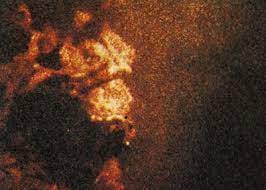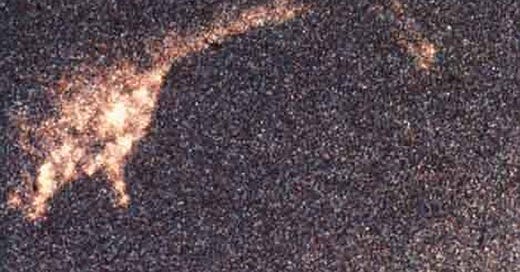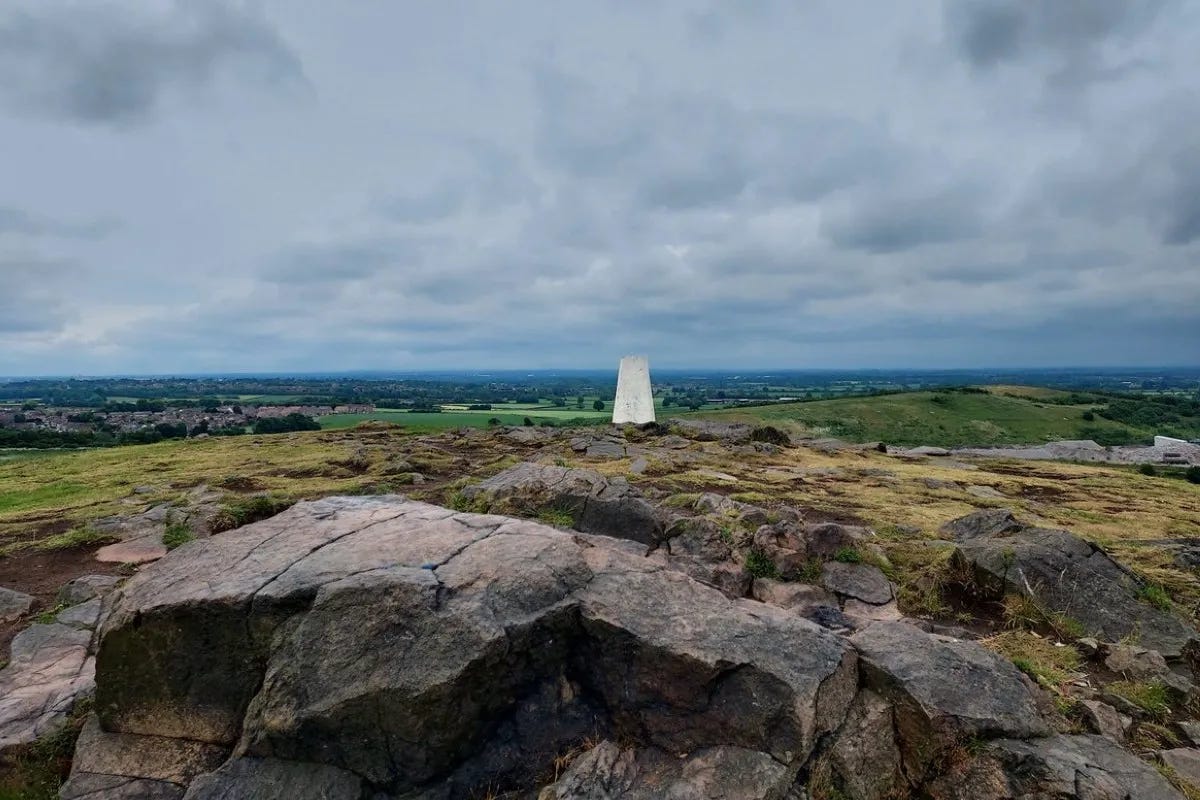Exploring damned news archive, Part 2
It was a different time, when there was potential in paranormal postulation
I’m reading through early editions of Fortean Times magazine, starting with issue #1. It’s the only way to see these issues which are long out of print (as are these special bound volumes). It was very tough to get this collection. But my intent was to see what stories surfaced long ago (starting in November 1973) and how they were presented back then.
Here is Part 1:
This is Part 2 where I’m finishing up the first bound volume, published through 1976.
As with many modern views of mysterious phenomena, early FT was loaded with sciencey ideas that promoted metaphysical explanations. The options were wide open. These were the days before easily available and portable electronic equipment that could be used by amateurs. There was an idea that science could figure out some of the answer but if scientists were dismissive of the fringe ideas about the phenomena, then they were derided.
Croft Hill
A two-part feature about mysterious geological, atmospheric and physical reports concerning Croft Hill was extremely interesting. I’d never heard this before. The location, in Leicestershire, is very near the geographic center of England, or what the authors Devereax and York call the “mesomphalos” (which I translate as middle hub or navel). The location alone of Croft Hill provides it with special significance “as a multi-dimensional reference point for aerial, terrestrial, and psychic events” and “performing a vital function in the sacred engineering of the U.K.” Yes, they thought it was a “geophysic” structure which is why lots of incredible observations had been reported.
It certainly did have significance to the ancients as a hill that rises up dramatically in an otherwise flat landscape. The hill is made of igneous rock about 452 million years old. So, technically it was part of an igneous system in the deep past, however, people seem to refer to it even today as an “extinct volcano” which isn’t accurate. I couldn’t find any mention that it was ever a “volcano”. However, the rumbling, lights and atmospheric reports from this place apparently caused some people to say the “old volcano” is coming back to life. That’s false. But there is occasional seismicity here, small quakes that seem to come in clusters over the centuries. It’s not the first time I’ve heard of strange observations in association with earthquakes (see Part 1).
People also saw unusual lights and experienced strange weather phenomena. There was a lot to unpack here. Even though there were no conclusions in the report, and no actual science done, I was fascinated by all this new content that certainly qualified as Spooky Geology!
Sadly, you also can find several references to what will become the ancient aliens idea - that prehistoric civilizations had advanced knowledge in many areas beyond what we know today, including magical secrets about the land. I do not find any merit in the idea that “sacred geometry” was used by the ancients to tap into the magic of the landscape. But, I’m only one of those pompous scientists that several FT contributors call out. I’m so closed-minded apparently that I just can’t see it.
Leys debunked
In Part 1, I mentioned that this was the age of leys. Leylines were considered real and important. That people could do their own mapping of significant sites by using ley lines was deemed to be operational proof that there were genuine alignments of locations of special historical significance. Enter one Robert Forrest whose experiment concerning leys was published in FT 13. He randomly located 50 dots on a map and used ley hunter’s techniques to draw lines between 3 or more points. He generated about 70 different lines showing that the mathematical evidence for leys being significant is poor. Forrest was connecting leys to UFO sightings as that was a popular idea of the time. Through his experiment, there was a 90% chance that a UFO sighting would occur in the vicinity of a ley line. Most leys hunters, he said, don't even draw in all the possible lines because there are so many that can be created using 3,4 or 5 points. The connections are meaningless. Ouch. I’m guessing that this made the ley aficionados pretty peeved.
Wild claims that just don’t happen anymore
There are some incredible events that seemingly used to occur more often than they do today. Two examples are mentioned in issues 12 and 13 that I have great interest in. First, mentioned in the context of the unusual events in Leicestershire was a nearby poltergeist incident where the term “spook water” is used. This is when polt-plagues houses experience water appearing or falling inside the house. Puddles may be left behind and there is no accounting for it via a plumbing leak. We simply don’t hear anything about these kinds of manifestations anymore. Even poltergeist cases are so very rare. Is the earth’s energy diminished where the events can no longer happen? Or have we just gotten less superstitious and more critical? I thought “spook water” was a superb term.
Secondly, rains of frogs are rarely reported anymore. Some of you may know my strong feelings about rains of fishes, especially the wrong-headed idea that fish rains are the result of waterspouts sucking up the water and what’s in it and depositing it inland. This FT notes a reference from the 16th century that put forward this waterspout idea. Though people still report that masses of small frogs appear after a rain storm, it is crystal clear that they did not fall from the sky. This issue also quoted another source from someone who had observed waterspouts as the cause of mysterious falls. It’s one thing to suggest animals rain from the sky but entirely another to claim that you saw them get sucked up and redeposited via a whirlwind. That’s nonsense. It’s a fact that if fish and frogs fall from any height, they don’t continue to flop around, they consist of splatter. Moving on…
A meteorologist nearly hit by falling ice
In FT 13, here was another case of an ice fall but, unlike in the examples from Part 1, this event was witnessed by a meteorologist firsthand. A large block of ice fell in the street on 2 April 1973 in Manchester, England in front of RF Griffiths who collected large pieces. He noted it was preceded 9 minutes earlier by a significant lightning strike which was said to have struck a passing plane. This kind of report would require a lot of work to follow up to verify the facts.
Mr. Griffiths is said to have reported that the ice was a layered structure. He called it a “hydrometeor”. Ice falls have in several cases been heralded by a loud noise and whistling (from the falling block). Does the lightning have something to do with the formation of ridiculously oversized hail boulders? I sure would love to know!
Cryptids don’t age well
I’ll end this post and review of this first bound volume with two cryptid treatments. Bob Rickard, one of the founders of FT, contributed an article in issue 14 about anomalous big cat sightings in the UK, particularly the Surrey puma. He takes a strong position that if the locals say they saw a puma, they should be taken seriously and believed. Whether big cats were running loose in the UK at various times in recent history isn’t the only issue here. Many Fortean phenomenologists take the position that collective evidence tells a story. And then they frame that story with the conclusion that something weird is happening. The opposite approach is to attempt to confirm each event. When the latter is done, the preferred story tends to collapse as the “strong” pieces of evidence fall away. If you want the best answer, this is the way to investigate. Rickard made a very strange step by comparing the Surrey Puma to the Beast of Gevaudan (a deadly series of gruesome deaths caused by wolves). I was fairly appalled at this inappropriate comparison. But that’s my view from 2023, not 1975. The world has changed. Hard to say what I would have thought given the available information back then.
Over the decades, far more light has been shined onto the question of Nessie being an unknown animal in Loch Ness. The clear consensus is that there is no one unique animal or population of animals that represent the Loch Ness Monster but that dozens of causes can account for what people interpret as monster sightings. Again, the view from 2023 is very different after the lake has been scanned by several types of modern technology in search of large creatures in the water. They have all failed to produce an animal. But back in FT 14, the question was still open. These were the days of the Rines expedition and the shocking underwater photos of flippers and fins. Scientists planned to convene under the auspices of the Royal Society of Edinburgh with participation by the British Museum. (Never allow anyone to assert that scientists didn’t take the question of cryptids seriously!) However, the scientists were critical of the evidence. Nessie proponents resorted to suggesting that if scientific technology couldn’t locate the creature, maybe it wasn’t a physical creature at all! The author of this article (Rickard, again) skirts the legitimate biological questions posed by calling scientists “obstinant”. Mention is made of the illustrious T.C. Lethbridge suggesting that it’s ridiculous to say people are mistaking a wave for a beast. And if they aren’t seeing an animal, maybe they are seeing its ghost. I tend to think he was not being facetious about this. He proposed some really out-there explanations.
It turned out that the opposing sides couldn’t even agree to discuss the issue and the meeting was canceled. Rines and Sir Peter Scott went ahead with a press conference the next day showing off the next set of underwater photos of the famous “gargoyle head” and the “long neck” creature. Curiously, it was quickly suggested that these were not Nessie but underwater trees or other debris. Those skeptics were correct. The Rines photos eventually lost all credibility and, today, even though people still claim to see the monster, the logical consensus that that Nessie is not just extinct, it never was extant in the first place.


Good stories die hard. The 70s was a time of promise in paranormal circles and many still hold on to those fringe ideas, but time has not been kind to extreme explanations. Decades later, the evidence has gotten nothing but worse for many potential paranormal subjects.






It really is unfortunate that certain paranormal ideas fall into disuse simply because they're no longer trendy. What a great concept "spook water" is! What spectral effluvia might be detected therein with a modern PK reader? Perhaps PK combined with modern AI could unlock the mysteries of spook water like no 70s researcher could!
Kinda surprised spook water didn't make it into Ghostbusters, actually.
I love reading your posts. I do believe in some things because of some experiences but do not buy into allot that I wish were true. Just hoping that you don’t provide proof that Santa Claus is not actually real 🙏